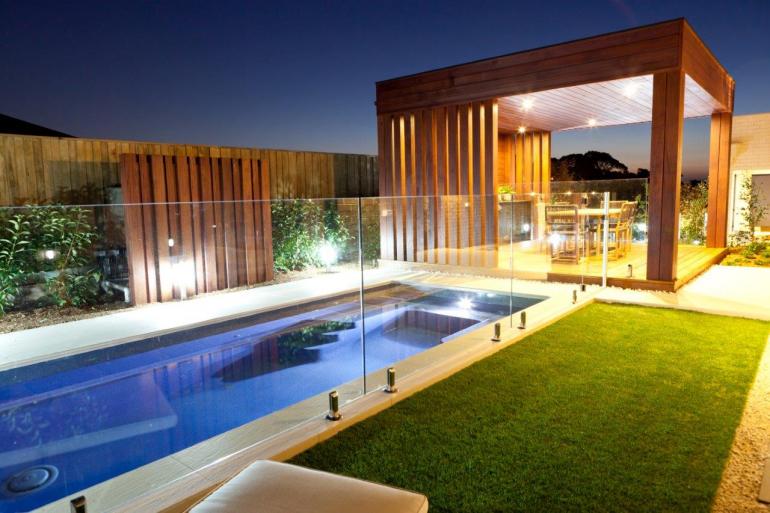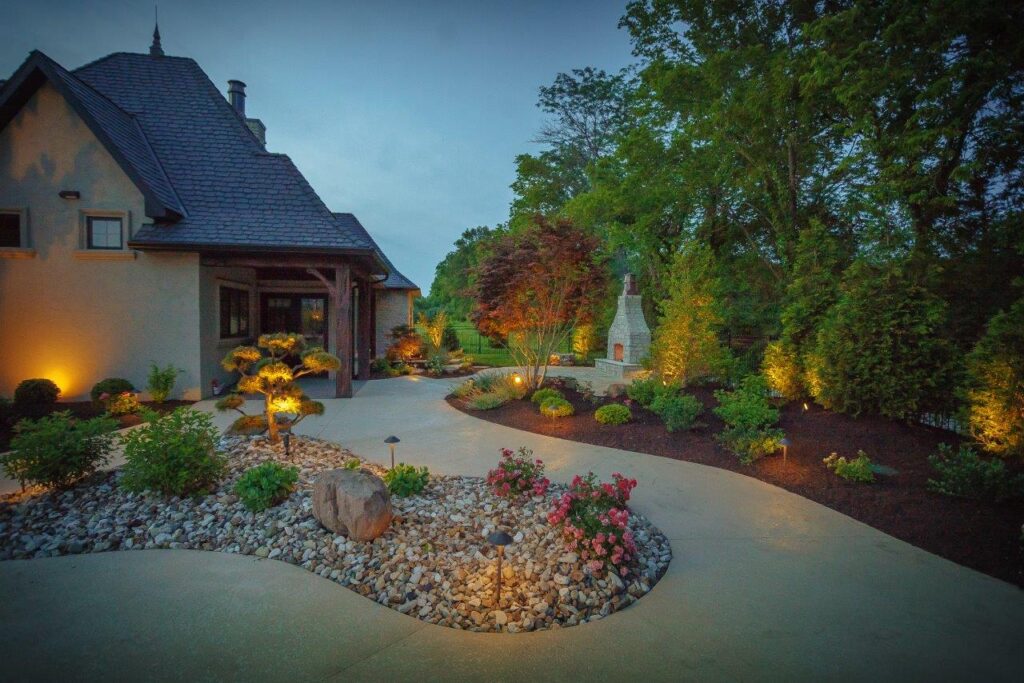When we envision the perfect living or working space, many of us often focus solely on the structure itself. Yet, architecture is only one part of the equation. The harmony between our built environments and the natural world plays a significant role in the feeling of a place, how it functions, and even its sustainability. The art of integrating architecture and nature is a delicate balance, but when achieved, it can create spaces that feel deeply rooted and attuned to their surroundings.
This article delves into the intricacies of this relationship and offers guidance on how to find that balance in your own spaces.
Begin With The Land

source: pinterest.com
Before putting pen to paper or even deciding on a style of architecture, take a moment to deeply understand the land you’re working with. Familiarize yourself with its topography, native plants, and how the sun and wind interact with it. Professionals, like the landscapers at landofelite.com, always emphasize the importance of first studying the lay of the land.
This allows for designs that seamlessly merge with the existing environment rather than imposing upon it. Whether you’re dealing with a sprawling rural area or a compact urban lot, the land itself provides valuable clues to guide your design process.
Use Native Plants
There’s a growing movement in landscape design that prioritizes native plants. Not only are these plants adapted to the local climate and soil conditions, but they also often require less maintenance and water.
Additionally, they provide habitat for local wildlife and help preserve the biodiversity of the area. By incorporating native plants into architectural designs, you can ensure that your structure doesn’t just sit on the land but is a part of it.
Incorporate Natural Elements In Building Materials

source: pinterest.com
Using building materials that reflect the surrounding environment can further bridge the gap between nature and architecture. Consider using stone sourced locally or wood from sustainable sources in the region. This not only reduces the environmental footprint but also ensures that the building feels like an extension of its surroundings rather than an intrusion.
Prioritize Sustainable Practices
Sustainability is about more than just solar panels and energy-efficient appliances. Sustainable architectural practices take into account the entire lifecycle of a building, from sourcing materials to how it will eventually be decommissioned.
Prioritize using materials that are sustainably sourced, have a low environmental footprint, and are long-lasting. This approach not only reduces the impact on the environment but also respects and integrates nature into the design process.
Blend Indoor And Outdoor Spaces

source: pinterest.com
Think of ways to make the transition between the indoors and outdoors feel seamless. Large windows, sliding doors, or even entire walls that open up can make the interior of a home feel like it’s an extension of the exterior landscape. Terraces, patios, and balconies can also play a role in blurring the lines between the built environment and the natural world.
Water Features As Natural Integrators
Water features like ponds, fountains, or cascades can serve as a bridge between nature and architecture. When designed thoughtfully, they can attract local wildlife, provide ambient noise, and serve as a focal point that binds the built and natural environments together.
Opt For Curves Over Straight Lines
While there’s nothing inherently wrong with straight lines, curves often resonate more with the natural world.
The contours of hills, the meandering of rivers, and the shape of plant life are all predominantly curved. Incorporating these elements into architectural designs can create a more organic and harmonious relationship between structures and their surroundings.
Consider Seasonal Changes

source: pinterest.com
Nature is not static; it changes with the seasons. When integrating architecture and nature, it’s important to envision how a space will evolve throughout the year.
Plant deciduous trees to provide shade in the summer and let in light during the winter. Design outdoor spaces that can be enjoyed year-round, whether it’s a sun-soaked patio for summer or a cozy fire pit area for colder months.
Conclusion
In our rapidly urbanizing world, creating spaces that honor and integrate with the natural environment is not just a design trend, but a necessity. By making conscious choices throughout the design and building process, it’s possible to create harmonious landscapes that feel timeless, grounded, and intrinsically connected to the land they inhabit.
Taking cues from nature doesn’t mean sacrificing modern comforts or aesthetics. Rather, it’s an opportunity to craft spaces that are sustainable, functional, and deeply resonant with our innate love for the natural world. After all, we are not separate from nature; we are a part of it. By remembering this and applying the principles outlined above, we can foster a deeper connection with our environment, enhancing our well-being and leaving a lasting, positive impact on the world.



